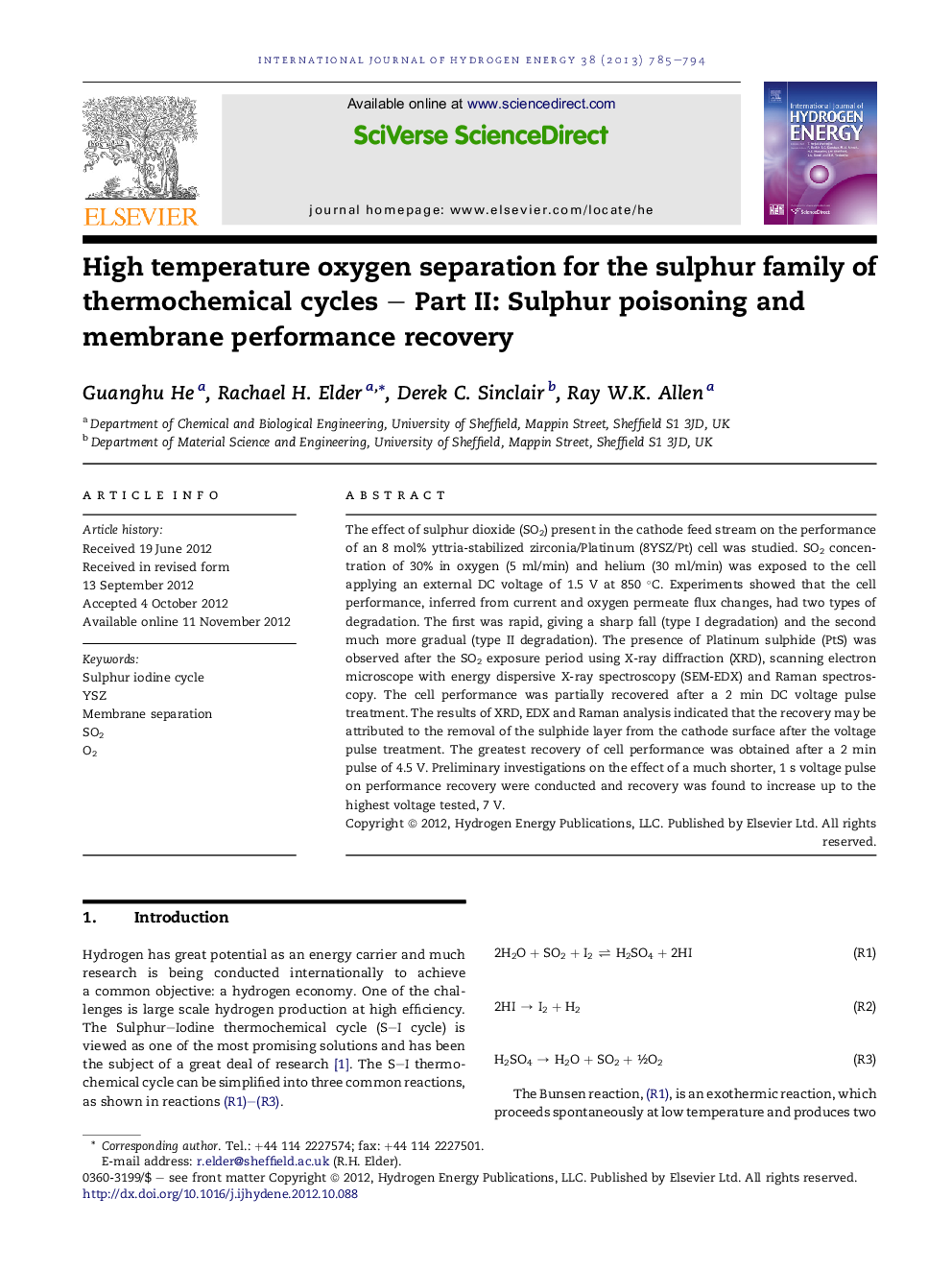| Article ID | Journal | Published Year | Pages | File Type |
|---|---|---|---|---|
| 1282044 | International Journal of Hydrogen Energy | 2013 | 10 Pages |
The effect of sulphur dioxide (SO2) present in the cathode feed stream on the performance of an 8 mol% yttria-stabilized zirconia/Platinum (8YSZ/Pt) cell was studied. SO2 concentration of 30% in oxygen (5 ml/min) and helium (30 ml/min) was exposed to the cell applying an external DC voltage of 1.5 V at 850 °C. Experiments showed that the cell performance, inferred from current and oxygen permeate flux changes, had two types of degradation. The first was rapid, giving a sharp fall (type I degradation) and the second much more gradual (type II degradation). The presence of Platinum sulphide (PtS) was observed after the SO2 exposure period using X-ray diffraction (XRD), scanning electron microscope with energy dispersive X-ray spectroscopy (SEM-EDX) and Raman spectroscopy. The cell performance was partially recovered after a 2 min DC voltage pulse treatment. The results of XRD, EDX and Raman analysis indicated that the recovery may be attributed to the removal of the sulphide layer from the cathode surface after the voltage pulse treatment. The greatest recovery of cell performance was obtained after a 2 min pulse of 4.5 V. Preliminary investigations on the effect of a much shorter, 1 s voltage pulse on performance recovery were conducted and recovery was found to increase up to the highest voltage tested, 7 V.
► High temperature oxygen separation membranes for the SI and HyS cycles. ► Performance degradation over time shows two distinct regions. ► Type I degradation due to SO2 absorption on the electrode surface. ► Type II degradation due to PtS formation, detected using XRD, SEM-EDX and Raman Spectroscopy. ► Performance partially recovers after application of external voltage pulse.
